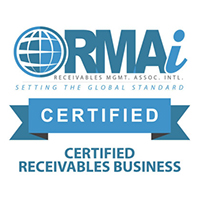How to Limit Risk When Buying Debt

When it comes to buying debt, it’s impossible to deny that there is at least some level of risk involved. There’s a good chance that the creditor will already have attempted to chase the debt and have been unsuccessful. This can make your job that much harder – the borrowers are unlikely to be able to settle the loan, or they probably would have done so already. These individuals have furthermore already been through a debt collection process so may be irritated by further communications.
It’s also important to consider the risk to the consumer. If you don’t have a strategy in place to protect the Personally Identifiable Information (PII) of each borrower, you could be putting this data at risk. Your brand is furthermore something to take into account – you certainly don’t want to put this at risk by purchasing debt from a less than reputable creditor.
Essentially, a debt buyer can find it difficult to limit certain risks, not to mention make a good return on their investment, unless they know what they’re doing! There are ways to mitigate the risks of debt purchase, and we’ve explored some of the top strategies below:
1. Develop a Comprehensive Strategy
The first thing you need to do in terms of mitigating risk is to develop a strategy. If you have come up with processes to follow should anything happen, then you won’t have to worry so much about being blindsided with issues! Most lenders assume that at least a small percentage of their loans will default, and will thus have a strategy in place to attempt to collect, and then potentially sell this debt. As a debt purchaser, you’ll also need to have processes set up that will allow you to make as much net profit as possible.
You should also consider how you’ll track and manage any post-sale activity on accounts that you’ve purchased. If a borrower were to make a payment to the lender, you’d need to ensure that this payment was transferred across. If you don’t have a suitable platform in place to monitor such transactions and activity, you may wish to partner with a broker like EverChain UK, who can not only provide you with a comprehensive post-sale management platform, we can also help you purchase debt portfolios with less risk attached through our certified marketplace.
2. Specialise in Particular Debt
Another way to mitigate risk and maximise your Return on Investment (ROI) is to focus your efforts on a particular type of debt. Perhaps you specialise in certain verticals, such as auto deficiencies, types of account, like those with higher balances, or a specific asset class, such as unsecured consumer credit. Whatever you specialise in, you can hone your skills in this segment of the debt sale market, streamlining your processes and increasing your profit margins.
You can furthermore experiment with the time at which you purchase your segmented debt portfolios, in order to get the best ROI. So you can see whether you get good returns when you buy debt at charge-off, after internal collections, or after a set period of time, such as three months after the loans have been defaulted.
It’s also worth bearing in mind that lenders may be more likely to sell debt portfolios to buyers who specialise in particular types of debt. It can be helpful for both their brand and yours if you have a high success rate in terms of ROI.
3. Consider Compliance and Due Diligence
When it comes to compliance, one of the things you need to ensure is that you’re protecting the PII of the consumers in your debt portfolio. With the introduction of GDPR in 2016, the rules and regulations concerning personal data have become stricter than ever, and it can be easy to make a misstep that could compromise your consumers, brand, and reputation. For example, if you were to receive a debt portfolio through email rather than via a secure platform that masks the data, you could be putting this personal information at risk.
In terms of due diligence, it’s essential that you give yourself plenty of time to complete any necessary paperwork. Such paperwork is incredibly important when it comes to mitigating risk, and you should complete any forms requested by the broker or creditor. If you use the services of EverChain UK, we’ve made the process simpler, by allowing buyers to become certified to bid across a number of different portfolios for sale.
4. Make Sure You’re Ready for Post Sale Processes
Until a loan is paid or settled in full, the original creditor is technically responsible for the account, regardless of whether it has been sold on to a third party. Due to this, they will need to have a process in place to track chain of custody, during and after the sale. They will furthermore have to monitor and resolve any customer complaints that may arise, using up to date data.
These are things you need to consider when purchasing debt – are you ready for steps later down the line? If you’re unsure about any of the above strategies and processes, it may be a good idea to speak to experts. EverChain UK have been working in the financial service industry for a number of years, and would love to hear from you regarding the debt sale process! Get in touch today to discuss your debt purchase needs and requirements.
Related Posts
Are you a creditor considering selling your non-performing loans on the secondary market? There [...]





